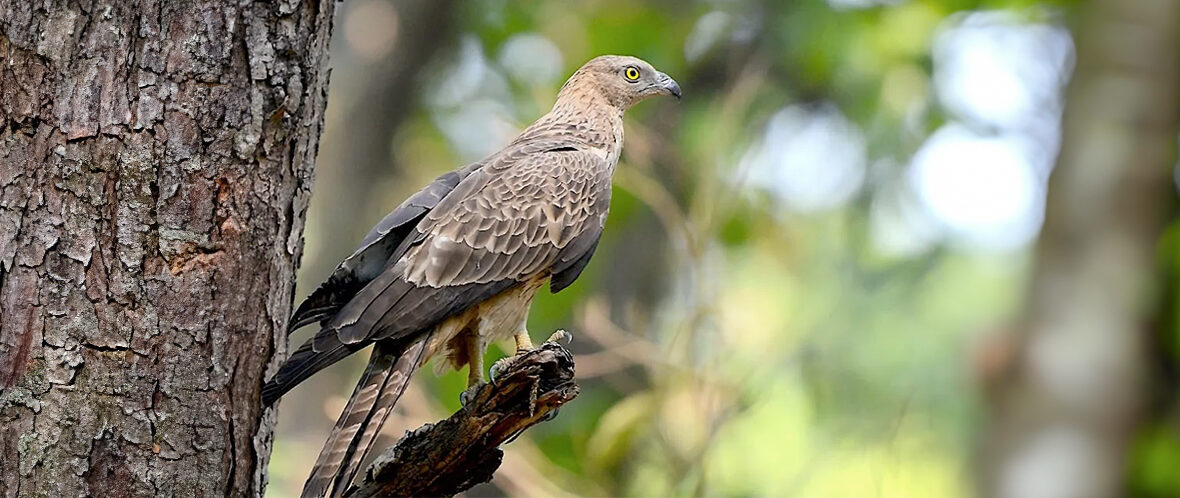
The crested honey buzzard, aka Asiatic, eastern, or Oriental honey buzzard, hails from Asia and Australasia. There are 6 subspecies of these buzzards. They may face the threats of habitat loss at the hands of renewable energy and the logging industry, and climate change, but they are still abundant enough to be listed as Least Concern by the IUCN. Their numbers are decreasing though. As of 2021, they numbered 666,666 wild individuals.
First the Stats…
Scientific name: Pernis ptilorhynchus
Weight: Up to 49.4 ounces
Length: Up to 24 inches
Wingspan: Up to 61 inches
Lifespan: Up to 12 years
Now on to the Facts!
1.) Their diet primarily consists of bee and wasp larvae, extracted from honey combs and nests. They also eat honey and honey comb.
2.) In the summer they migrate to Siberia and Japan. For the winter months they migrate to southern Asian countries.
3.) They are found from sea level to 5,900 foot elevations. During migrations they can be found at elevations of up to 9,800 feet.
4.) Juveniles have evolved a Batesian mimicry (where a harmless species adopts or mimics the behaviors of a harmful species). The bird species they mimic is the Nisaetus hawk-eagle.
5.) As mentioned, there are 6 subspecies: P. p. orientalis, P. p. ruficollis, P. p. torquatus, P. p. ptilorhynchus, P. p. palawanensis, and P. p. philippensis.
But wait, there’s more on the crested honey buzzard!
6.) Recently, the species P. p. orientalis has been discovered on the Alaskan island of Shemya. It is the first and only known species of these buzzards to venture into North America.
7.) The preferred habitats are well-forested lowlands and hilly regions that are broken up by open glades.
Did you know…?
The short and dense feathers on their head and face help thwart the stinging attacks of wasps and bees. They may have also evolved a chemical defense as well. The feathers are coated with a white filamentous covering that may deter the stinging insects altogether.
8.) The substance on the wings of honey buzzards renders wasps inactive.
9.) Their nests are constructed from sticks and measure up to 31 inches across, and are lined with fresh green or dried leaves.
10.) Females lay up to 2 eggs that hatch in up to 5 weeks.
But wait, there’s still more on the crested honey buzzard!
11.) Chicks fledge in up to 6 weeks and are independent in up to 58 weeks.
12.) As climate change continues to affect wind conditions worldwide, the wind support for migration over the 420 mile migration over the eastern Chinese Sea could possibly be reduced.
13.) In Indonesia, the people living in or near the forested areas often suffer attacks, sometimes even fatal, by giant honey bees. The local people and honey collectors blame the honey buzzards for these attacks. This is due to
the birds flying away with a piece of honeycomb in its claws, & being chased by angry bees that then attack humans en route.
14.) That being said, researchers have found no evidence of this taking place. The researchers actually believe the the conflict between bee and wasp stings is due to human activity increasing the conflicts due to habitat loss and destruction.
Now a Short Crested Honey Buzzard Video!
Be sure to share & comment below! Also, check out the Critter Science YouTube channel. Videos added regularly!
Want to suggest a critter for me to write about? Let me know here.
Some source material acquired from: Wikipedia & IUCN
Photo credit: Roundglass Sustain



